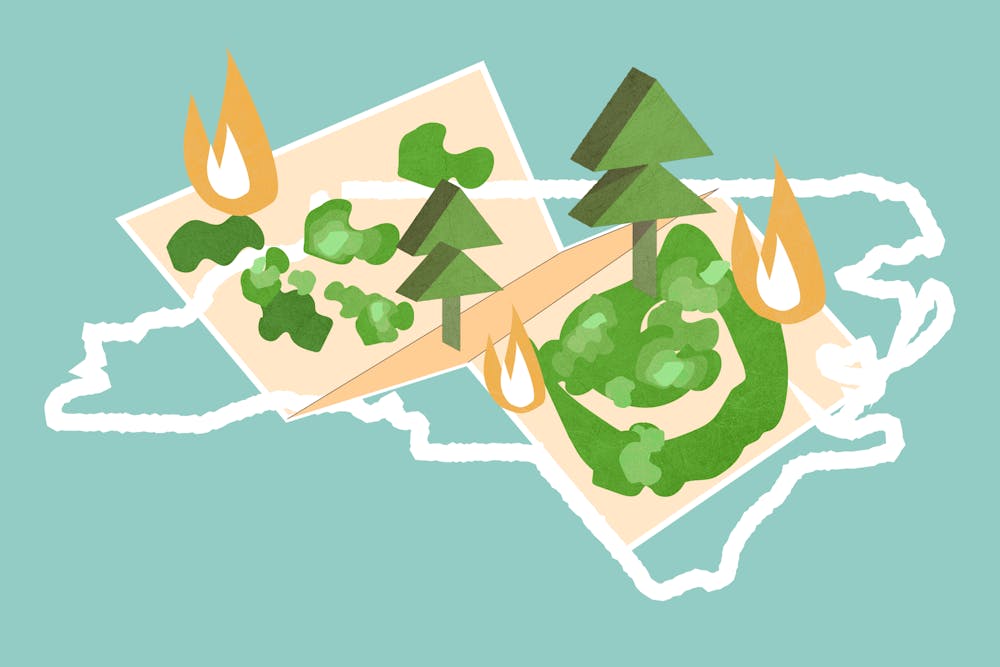Wildfires in western North Carolina are still burning more than a week after Gov. Roy Cooper declared a state of emergency on Nov. 8 for 33 counties, citing the drought conditions and wildfires posing a risk to public health and safety.
The North Carolina Forest Service implemented a burn ban in 30 counties due to the increased fire risk. The ban prohibits the open burning of yard waste and commercial field clearing practices and cancels all burning permits.
The Poplar Drive and Collett Ridge fires are currently the two largest wildfires still burning in the state, at 98 percent and 79 percent containment, respectively. The Poplar Drive fire has burned approximately 434 acres of land in Henderson County north of Hendersonville. The cause of the fire was found to be a debris burn that occurred on private property.
Relative humidity levels and possible wind events in the next few days are concerns for Poplar Drive fire containment, Philip Jackson, NCFS public information officer, said.
The Collett Ridge fire, which was caused by lightning, has burned over 5,400 acres in Cherokee and Clay counties. The smoke produced by the fire has negatively impacted air quality index readings in the area.
On Thursday morning, an area just south of Anderson, N.C. — which is in Cherokee County — registered an air quality index of 279, which is classified as “very unhealthy.” According to the EPA, a rating of “very unhealthy” suggests all residents of the area will notice negative health impacts.
Both Clay County and almost all of Cherokee County are under extreme drought, according to maps released on Thursday from the University of Nebraska-Lincoln's U.S. Drought Monitor. Much of Henderson County is also under an extreme drought.
William Vizuete is a UNC professor of public health who researches air pollution and particulate matter. He said PM2.5, a more fine particle produced by wildfire smoke, is small enough to reach the deep part of human lungs and enter the bloodstream.
Even though PM2.5 is known to be harmful to human health, Vizuete said the amount of PM2.5 that becomes harmful varies in different regional locations because of the composition of the PM.



